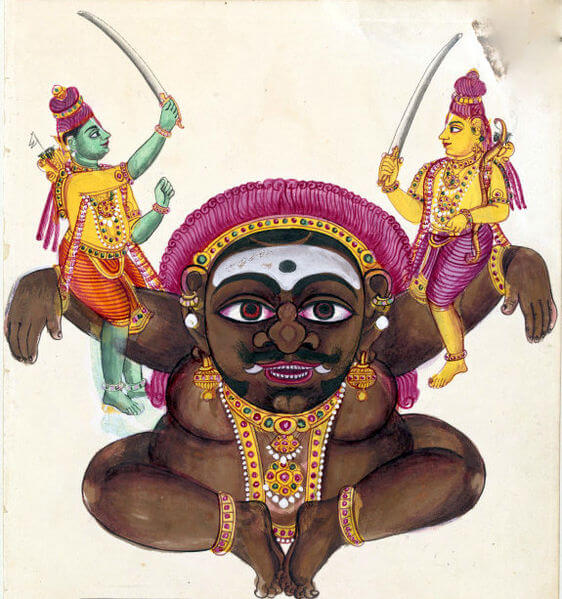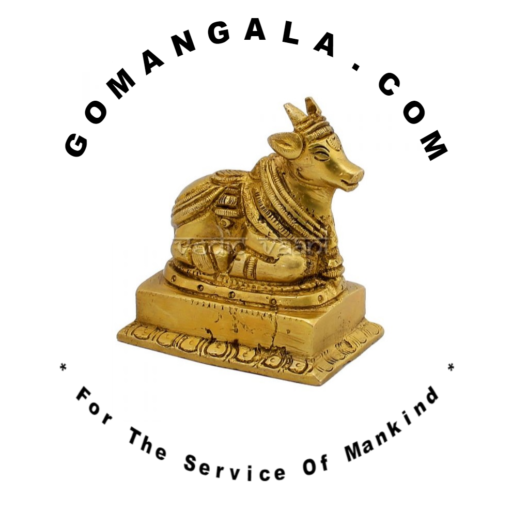In Ramayana, Ayomukhi and Kabandha were demons. The area north of Lanka and south of Kosala in India was the free moving zone of demons. The main forest area called Dandakaranya was occupied by the fierce demons, and Maricha was ruling as the forest king in charge, since his nephew Kumbhakarna was sleeping then. He was the maternal uncle of Ravana. Janasthana was the capital of Dandakaranya. It was having road access, south up to River Godavary and north up to River Ganga. Then, the hermit of Rama was very near to Janasthana, from where Sita was abducted by Ravana. He was assisted by Maricha but then, killed by the arrow of Rama. Since Sita was untraceable, they deserted their hermit and started to move, searching towards southern side.

At first, they moved west and crossed the Mountain Krouncha (near today’s Bellary). Then they started searching for Sita towards southern side, climbing the mountains and moving through the dense forests. Thus they arrived near the Thungabhadra River and crossed over to the southern side. Rama was moving in front and Lakshmana was following him from the rear.
Suddenly, a lady demon had come stealthily from behind, and plucked the hand of Lakshmana, with her right hand. The demon put her head downwards always. Then, Lakshmana was also depressed with sorrows and simply walking, looking towards front, left or right, slowly. The demon had appeared with a fierce look and Lakshmana could cut her arm, by his sword, with which he had caught his hand. Then with blood flowing from the wound, she followed him, bearing the pain. Later he understood that her name was Ayomukhi. The foot path was leading towards the Mount Ayomukha. Later, the demon Ayomukhi pulled with her left arm, again, the right hand of Lakshmana. Then, with his sword, Lakshmana cut her left arm also. But slowly, hysterically crying, she followed them.
Next, another male demon had come stealthily, from behind, and plucked the hand of Rama, with his right hand. The male demon was always looking forward. Then Rama was also aggrieved, and simply walking, looking towards front, left or right. The demon had appeared with a fierce look and Rama could cut his arm, with a sword which he had been caught in the hand of Lakshmana. So he snatched the sword from Lakshmana and had done so. But with blood flowing from the wound, he followed him, bearing the pain. Later they understood that his name was Kabandha. The foot path was leading towards the Mountain Prasravana. The demon Kabandha had pulled with his left arm, the left hand of Rama. Rama with the same sword cut the left arm of the demon then. But he also, slowly, hysterically crying followed them.
When they reached near a river, the demons roared together and asked where they were going. All of them tired and with suffered grievances, answered the demons’ questions. Then both the demons requested Rama and Lakshmana to cut off their heads and put their body to the fire, and for such actions, they assured the future plans and paths for their movements by which they would get success. Lakshmana had arranged for the pyre and then cut off the head of Ayomukhi. Rama received the sword from Lakshmana and cut off the head of Kabandha and threw it into the fire. Lakshmana had put the body of Kabandha also into the fire.
Then Rama and Lakshmana had seen both souls shining like gold and heard words for their future path for movements and plans. The summary is as follows:
They could move in the beautiful forests south and find the kingdom of monkeys. There they would be received by the monkeys, they would help them to procure Sita and then the souls of the demons took their leave, thanking for them for redeeming them from an old curse of Rishis and then disappeared into the high sky.
Rama and Lakshmana ate the fruits of the trees. On the river side, they started their journey towards the south searching for Sita. Then they found a Mountain and a water tank, a pleasant area and hoped they would get some good help from there. They hopefully moved further.
Rama was famous for his celestial bow, inexhaustible quiver, and his unmistaken aiming of arrows, but he used sword of Lakshmana to kill Ayomukhi and Kabandha, the couple of demons. This was a special occasion when Rama used sword to kill a demon, Kabandha. Lakshmana had killed Ayomukhi. These two demons in their previous life caused harm to many Rishis and Munis in the surrounding of Hayamukha Parvata during their penance periods. One day, one Rishi had cursed them but immediately they both sought his pardon and that Rishi advised them to do penance to get the remedies. After many years, they got the boon, as their curse would end when their hands were cut by a sword by Lakshmana and Rama during their exile and put their bodies into the fire.
अयोमुखश्च गन्तव्यः पर्वतो धातु मंडितः । विचित्र शिखरः श्रीमांश्चित्र पुष्पित काननः ॥
Later, when Sugriva ordered his troop to go search for Sita in the southern direction, he also mentioned to search again on the same mountain premises. The current name of the mountain is Kudremukha. The mountain is rich in iron ore which was already written and seen in the verse of Valmiki Ramayana as above.
कबन्ध इति शोकबन्धनं विकल्पं एके । वान्छन्ति पूर्वापर वर्ण लोपात् ॥ बालकानां मनोज्नार्थं कृतं लक्ष्म्णस्य च । अयोमुखिं अरि मर्दन स्वभावात् ॥
Lakshmana was depressed with sorrows, and that had caused him, on his way as a demon. In order to make it more pleasing to the children Lava and Kusha, the author, Valmiki Maharshi, had suitably used the names of demons. The habits of killing enemies were supported here. Rama was tied with grief. The name of that demon which tied him with grief, was put as Kabandha, from the befitting word Shokabandhana, omitting the two letters first, ‘sho’ and last, ‘na’, as cut by sword by Rama to memorize, the remover of sorrows, as Rama always.
So to kill the demons, instead of bow and arrows, sword was used in this context.
Basically Ramayana was written in Sanskrit, then taught to Lava and Kusha and the author was telling the children to by heart the verses taught to them. Doubts and frequent questions were common within children but Valmiki Maharshi had managed to clear them then and there satisfactorily.
Rama and Lakshmana advanced with new hopes towards Kishkindha then.
Next post, being of Swayamprabha in Ramayana, may not be missed. Mainda and Dwividha in Ramayana would be presented separately in another article.
Readers may provide feedback and share this story with friends and family.

Leave a Reply